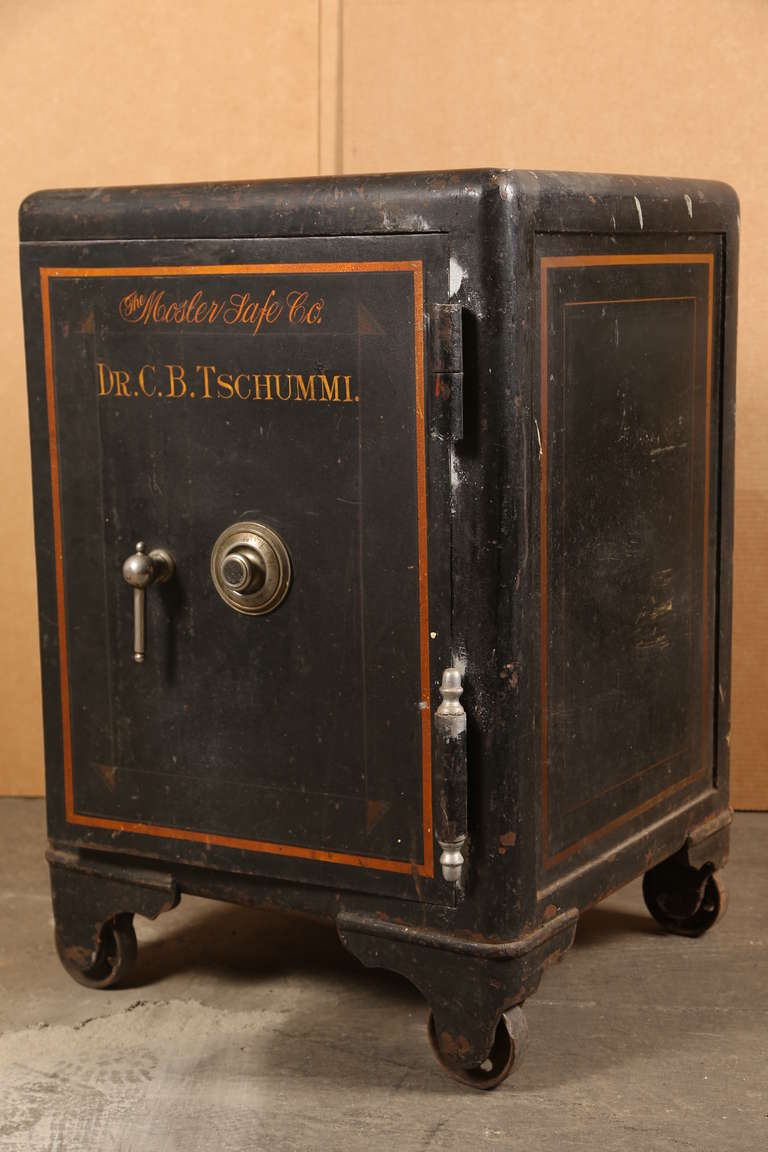

An Army lieutenant sent a letter to Mosler in 1946 saying he “found in one of three structures standing, four large vaults built by the Mosler Safe Co. government, and Mosler safes have survived some of the biggest man-made explosions in history. When martial law was declared, the nearby lawn served as encampment for incoming troops and grazing land for cavalry horses.ĭuring the 1920s and ‘30s, Mosler reaped a benefit from being located in “Little Chicago.” Whenever there was a safe blown in the area (and there were many), Mosler would send out an inspector so that they could improve the security of their products.īut no common yegg could come up with a blast like the U.S. A water line was run from the Mosler plant’s well to the street to make potable water available to the public. In fact, when the 1913 flood devastated Hamilton and put Mercy Hospital under water, the Mosler plant cleared out the paint room and set up telephone lines to serve as both a hospital and a crisis center.

That certainly wasn’t a problem in their new East Hamilton home. One of the reasons Mosler left Cincinnati was to escape the flooding of the Ohio River. A recession in the late 1890s slowed things down, but by 1900 a booming economy led to further plant expansion.

Within two years, the plant started expanding with permanent offices, including a clock tower that became an East Hamilton landmark. The East Hamilton Power and Light Company formed to provide electricity not only for the plant, but the surrounding homes and street lights. The Mosler Station, just east of the plant, boasted a 200-foot platform and a station house to accommodate 50 passengers. The other 30 acres had been set aside for new housing for the workers, and by the time the plant had opened over 100 homes had been built.
1915antique mosler safe models full#
There were some delays in construction due to a labor strike and other issues, but the 300,000 square foot factory was in full production by October 12, 1891, on 10 acres of the land offered by Kahn and Parrish. This would make Hamilton the great safe market of the country.”Īlthough many other cities, notably Sidney and Canton in Ohio and Aurora in Indiana, also made credible pitches for the Mosler relocation, the brothers liked Hamilton and on July 5, 1890, signed the agreement. “The right thing to do now is to call a public meeting and the workingmen should take an active hand in this meeting,” the Evening Journal announced with the following prediction: “If the Mosler Safe and Lock Company comes to Hamilton, the Hall Safe and Lock Company will follow. At the time, Mosler employed 400 workers, but expected that number to jump to 600 when they made their big move. Parrish and Lazard Kahn offered up $85,000 in cash and 40 acres of land in what would become East Hamilton if they would put the plant here, where there would be access to both the canal and the railroads with plenty of neighboring land. Hamilton was at the time a growing and bustling industrial city with big dreams. Louis, Kansas City, Philadelphia, and even Mexico City.Īs the 1890s approached, the company had outgrown its facilities at Elm and Front streets on Cincinnati’s riverfront, and the constant flooding of the river compelled the Mosler brothers to seek higher ground. By the mid-1880s, The Mosler Lock and Safe Company had established sales offices in New York, Boston, Chicago, St. Gustav died in 1874 and turned operations over to his sons Moses and William. It proved to be a rapidly flourishing enterprise. The German immigrant Gustav Mosler was a cigar maker and bookkeeper before going into the safe manufacturing business in 1867. Many Hamilton residents will recall the days when the city’s entrances welcomed visitors to “The Safe Capital of the World.”ĭue to the presence of the Mosler Lock and Safe Company, Herring-Hall-Marvin, and other safe manufacturers, there was a time when Hamilton boasted half of the world’s safe production, largely the result of other local businesses teaming up to lure companies away from Cincinnati.


 0 kommentar(er)
0 kommentar(er)
